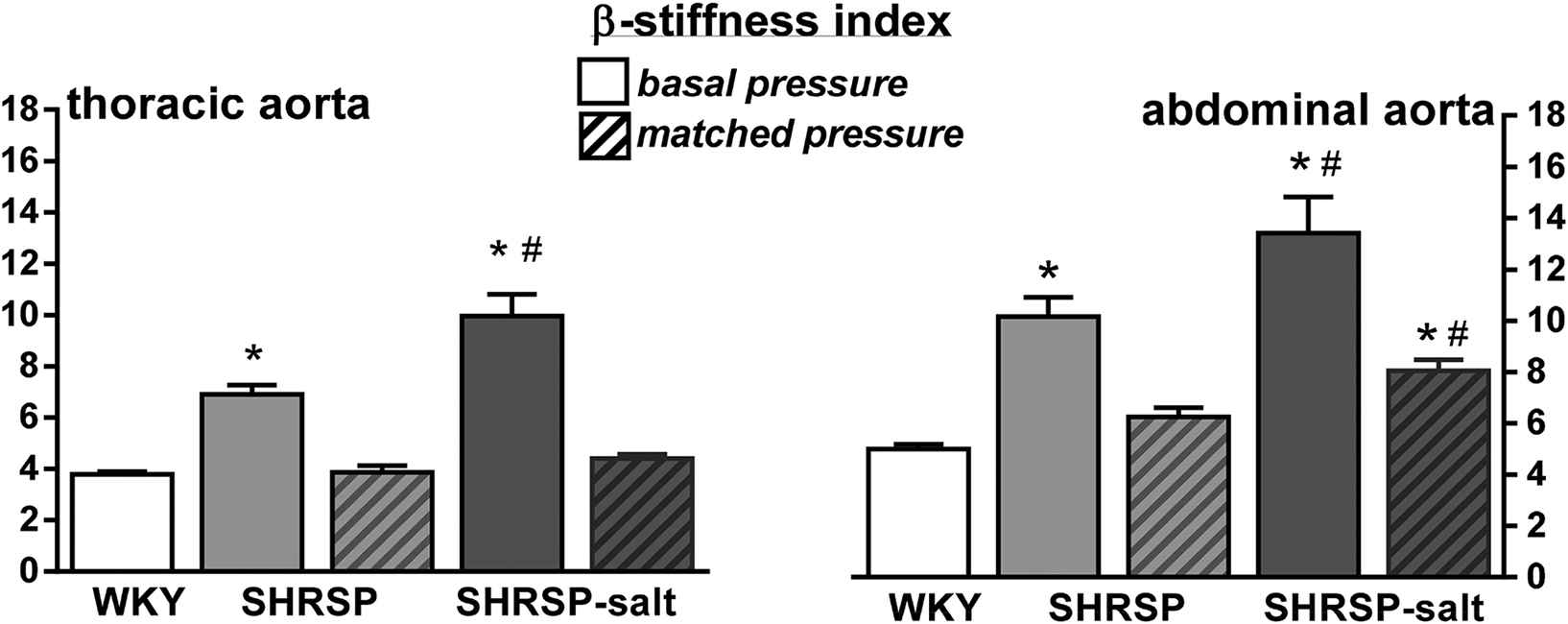PO-01 ANIMAL MODELS OF LOCAL AORTIC STIFFENING: THE EFFECT OF SALT IN SHRSP
- DOI
- 10.1016/j.artres.2016.08.009How to use a DOI?
- Open Access
- This is an open access article distributed under the CC BY-NC license.
Objectives: The cardiovascular risk associated with central artery stiffening is recognized but better understanding of the mechanisms and therapeutic strategies are needed. Therefore, animal models for evaluating stiffness are crucial. We and others use different approaches to calculate aortic stiffness. Pulse wave velocity (PWV) is relatively easily measured and is indispensable, despite being highly influenced by blood pressure. Local determination using echotracking allows us to determine stiffness at various levels of the arterial tree and to measure the pulsatile diameter wave (distension). Previously, using this technique, we have shown the presence of an aortic wall stiffening in spontaneously hypertensive rats (SHR) when the pressure effect is complicated by a reduction of nitric oxide or by aging (1–2). Age, endothelial dysfunction and salt are main contributors in human cardiometabolic pathologies.
Methods: We have evaluated the effect of salt in stroke prone SHR (SHRSP). SHRSP-salt (4.5 % NaCl diet 5 weeks, n=7), compared to normotensive rats Wistar Kyoto (WKY) and SHRSP with normal diet (n= 6–6). After pentobarbital anesthesia, parameters were measured at basal and again at reduced blood pressures (following acute clonidine administration), in the thoracic (TA) and abdominal aorta (AA).
Results: At basal pressure both the TA and AA presented decreased distensibility, distension and distension-pressure loop, increased β-stiffness index (figure) and local PWV in the SHRSP and SHRSP-salt. Following clonidine administration to match the WKY basal blood pressure (130 mmHg), only parameters acquired from the AA of SHRSP-salt remained altered.
Conclusions: This study confirms the potency of ultrasonic derived stiffness measurements and that aortic remodeling is non-uniform along the aortic trunk. It shows that salt in addition to hypertension develops central artery stiffening; after 5 weeks, the TA presents a pressure-dependent and AA both pressure dependent and independent stiffening.
(1: Vayssettes-Courchay et al., 2011, 2: Lindesay et al., 2016)

Cite this article
TY - JOUR AU - George Lindesay AU - Christophe Ragonnet AU - Nicole Villeneuve AU - Christine Vayssettes-Courchay PY - 2016 DA - 2016/11/24 TI - PO-01 ANIMAL MODELS OF LOCAL AORTIC STIFFENING: THE EFFECT OF SALT IN SHRSP JO - Artery Research SP - 89 EP - 89 VL - 16 IS - C SN - 1876-4401 UR - https://doi.org/10.1016/j.artres.2016.08.009 DO - 10.1016/j.artres.2016.08.009 ID - Lindesay2016 ER -
